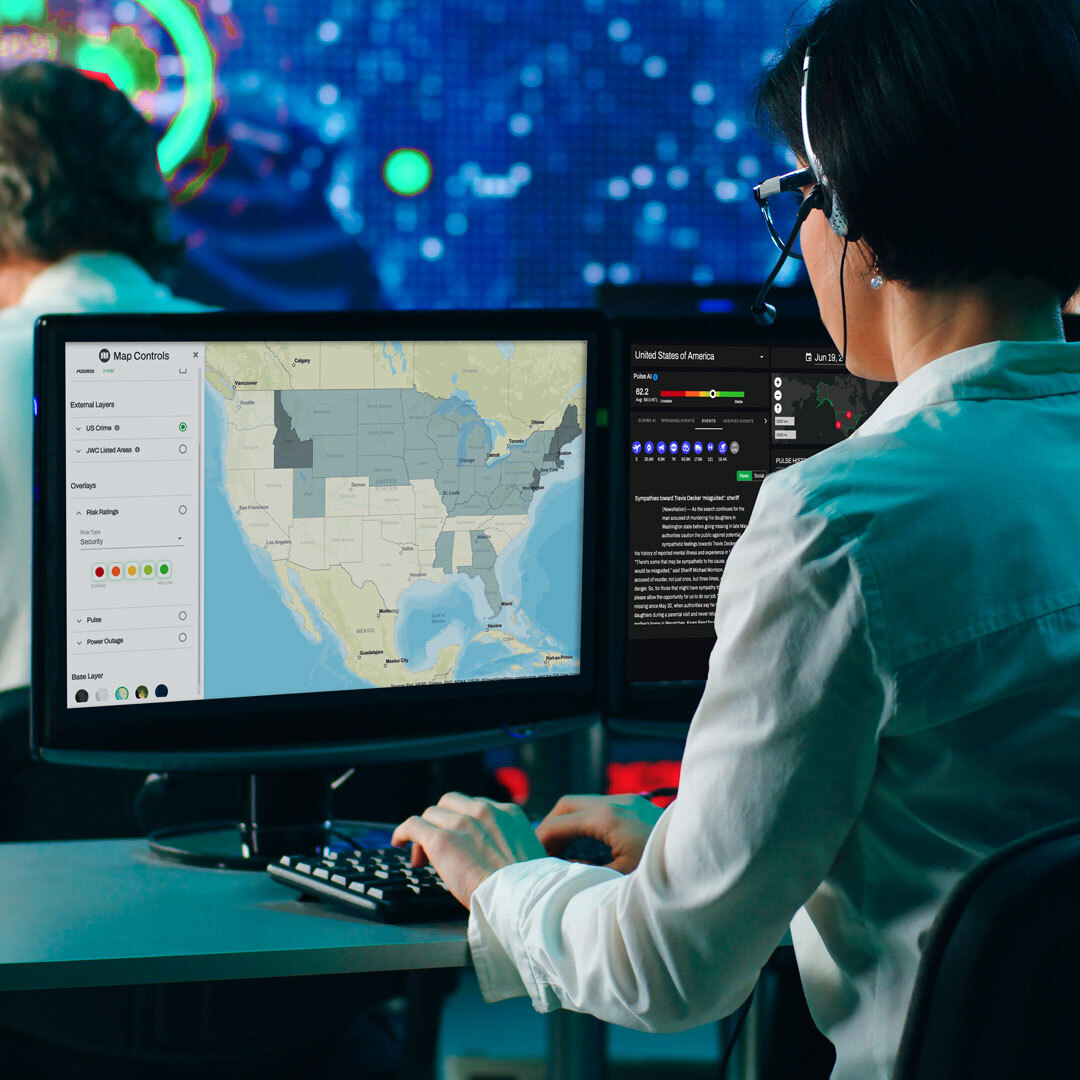A few years ago, I wrote the first version of this article titled ‘The 10,000-Hour Button,” which reflected on the 23 years that I worked in the United States Intelligence Community (IC) leading counterterrorism, counter narcotics, and homeland security analysis and collection operations. These were some of the best years of my life – working with the men and women of the Intelligence Community. They were charged with trying to find and understand an unfathomable amount of critical information, and then clearly and concisely communicate it to our political and military leaders.
I decided to update and republish this article now after facilitating a discussion on the use of artificial intelligence recently at a C5ISR (The Command, Control, Communications, Computers, Cyber, Intelligence, Surveillance and Reconnaissance Center) conference. I started the discussion by asking a few dozen analysts and managers from across the DOD and IC a simple question: “How much of your daily job is automated with AI, machine learning, or statistical analysis today?” The response was almost unanimous: “Very little to none.”
During my time with the IC, the bulk of the work, from data gathering to analysis, relied on the tenacity, willpower, and intellectual acumen of analysts. They grappled daily with the herculean task of processing endless news articles, sorting through countless messages, navigating chat rooms, and scrutinizing vast quantities of open-source data. This Herculean effort wasn’t exclusive to government agencies; law enforcement, global finance, and multinational corporations faced similar challenges, sifting through extensive documentation to safeguard investments and understand security risks relevant to their staff and operations. The sheer volume of manual labor required to monitor global events was staggering.
In today’s landscape, the data available for analysis has grown exponentially, adding to the already significant pressure and responsibility shouldered by the Intelligence Community, law enforcement, and corporate entities. Indeed, contemporary issues such as political upheaval, crises, and environmental challenges seem more pervasive than ever before. Yet, amidst these challenges, we observe a universally beneficial shift: the advent of advanced technology.
Now, to navigate the complex maze of information characteristic of the post-industrial era, governments and businesses must innovate to accomplish in minutes what once took weeks, and in days what previously took years. Breakthroughs in AI, ML, and NLP have transformed a formally unattainable goal into reality: monitoring a wealth of information streams effectively and efficiently.
These technologies have the capacity to aggregate, analyze, and synthesize content from social media, news outlets, and the Internet of Things, pinpointing information pertinent to an organization’s specific needs. When executed correctly, the integration of such technology marks a revolutionary advancement for security operations centers and intelligence officers alike.
While the IC community might not be leveraging innovations like AI, ML and NLP to the degree to which they should, the good news is that these technologies are being used in pockets by some global organizations and government groups. It’s now time for enterprise implementation.
AI-Powered Technology: Transforming the Intelligence Community
My background is in geospatial analytics and satellite imaging. When I joined the Intelligence Community in 1993, I was told that computers were about to do the job that I was hired to do within five years. That promise never came true during my tenure, which ended in 2016.
While I did not benefit from innovations such as AI during the earlier part of my career, it is exciting to know that security intelligence teams all over the world are now able to rely on these tools. Not only does it minimize the amount of time spent manually reviewing alerts and sorting data, but it gives analysts the time to apply their real-world knowledge and experience to the information the machines uncover. As a result, security teams can deliver critical insights to decision-makers that directly impacts the choices those leaders make in the face of a crisis, or better yet, ahead of one.
This is exactly what I now spend my days doing at Seerist – helping create solutions that empower security functions do their jobs faster, smarter, and better.
The Quantifiable Power of People + Machines
Seerist helps security, risk, and intelligence professionals navigate a risky world by helping them anticipate and avoid potential events that may be highly disruptive to their operations. We do this by combining intelligence from both machines and humans. Each constantly evolving to distill millions of data points into risk assessments that are neither guesses nor gambles. They are possibilities based on proof, past experience, and hard-won expertise.
The Seerist solution automates the collection of millions of data points using AI that we pioneered and continue to develop. Our algorithms then parse through the noise to uncover patterns of instability or shifting sentiments that could impact an organization’s interests. Our on-the-ground analysts take this information and provide context and actionable insight on topics that matter most to our clients.
At Seerist we know that machines and people are a winning duo. The machines can sort and process data at speeds that humans can only dream of. In fact, our platform analyzes approximately 150,000 pieces of content – with an average word count of 1025 – ranging from news articles, social media, blogs, etc. in a single day. This totals 153,750,000 words. Since the average reading speed for humans is 250 words per minute, it would take one analyst 615,000 minutes – or 10,250 hours or 427 days – to do this work.
What are the cost savings when you have machines help do the work? How accurate are the reports? Is this a scalable process? To estimate the time and costs savings, let’s consider the following factors regarding the analysis for one year of a single port:
- Traditional Exploitation Time: 365 hours — a conservative estimate is that a trained analyst will take one hour to exploit, identify and record their observations in a database. Assuming daily analysis that’s 365 hours.
- Traditional Reporting Process and Time: 520 hours — a traditional weekly intelligence summary can take eight hours to produce. A quarterly report takes 16 hours and a yearly retrospect report can take 40 plus hours. Total expended time for a year of reporting is 520 hours.
- Auto-Reporting Process and Time: Seconds — One button click and statistical and narrative process is complete.
- Scalability: Limitless — Seerist doesn’t get tired. The platform does not have a capacity limit.
- Total time saved: 883 hours
The end result is that analysts have an additional 833 hours to spend analyzing the findings, offering solutions to decision-makers, and reviewing insights to help forecast what might be on the horizon. These hours can be lifesaving!
Social and Geopolitical Trends and Stability
How do you quickly assess the trends and patterns in open source reporting of a country or city? Less than a decade ago, analysts would have to cull through as many reports as they could read in a day. Then, they would have to build analytic judgments based on that content, other information from known data feeds, key word searches, and semantic engines. We now have AI-driven solutions that can search the globe for the right intel, and we have hundreds of experts ready to add localized nuance and perspective to the data pulled.
Again, one might wonder, what is the cost savings? Is this a scalable process? To estimate the time and costs savings to this analytic process let’s consider the following factors regarding the analysis of one month-worth of news about Tripoli, Libya:
- Traditional Exploitation Time: 750 hours a month — a conservative estimate is that a trained analyst will take 30 minutes to read and record their findings in a database for a single report. That’s 749.5 hours of analytic time. Assuming a similar volume throughout the year, that’s an average of 9,000 hours.
- Traditional Reporting Process and Time: 392 hours — conservatively, a traditional monthly analytic summary can take 8–16 hours to produce. A quarterly report, up to 40 hours, and a yearly retrospect report can take 40 plus hours. Total expended time for a year of reporting is 392 hours.
- Total time saved: 9392 hours
What’s Next: Generative AI and Language Models
Generative AI can distill insurmountable amounts of data into concise summaries and draw insightful conclusions, thereby transforming overwhelming information streams into actionable intelligence with unprecedented speed and accuracy. Integrating generative AI and Large Language Models (LLMs) into intelligence analysis represents the next frontier in the automation of analytical processes. These advanced AI systems can do more than just sift through data; they can understand context, infer meanings, and even predict future trends based on historical patterns.
For example, LLMs can be trained on specific security protocols and intelligence gathering methodologies to automatically generate comprehensive reports that identify potential threats or opportunities. They can simulate expert human reasoning to draw connections between seemingly unrelated events, and produce summaries that highlight not only what is happening, but also why it may be happening. This allows analysts to focus on deeper strategic analysis and decision-making.
Furthermore, generative AI can assist in creating realistic training scenarios for analysts, enhancing preparedness and response strategies. The integration of such AI not only propels the automation of rote tasks but also enriches the cognitive aspect of analysis, providing a tool that augments human intelligence with machine efficiency and reliability.
Save Time and Press that Button
Saving nearly 10,000 hours wasn’t what we set out to do. We set out to create a platform that automates, streamlines and simplifies rote analytic processes and then apply real-world insights, historical knowledge, and localized perspective to facts to help leaders make the most informed decisions possible in order to keep their people, assets, and operations safe.
The speed that machines can uncover critical data is amazing. It is something I would have relished having at my disposal when working in the U.S. Intelligence Community. But data isn’t the answer; making sense of that data in an easily consumable format is the real game changer. And that is exactly what Seerist is doing. Right now. Imagine what we will come up with next!
Book a demo to see Seerist’s threat intelligence tools in action or follow us on LinkedIn to learn more about how Seerist helps you stay ahead of the curve.






